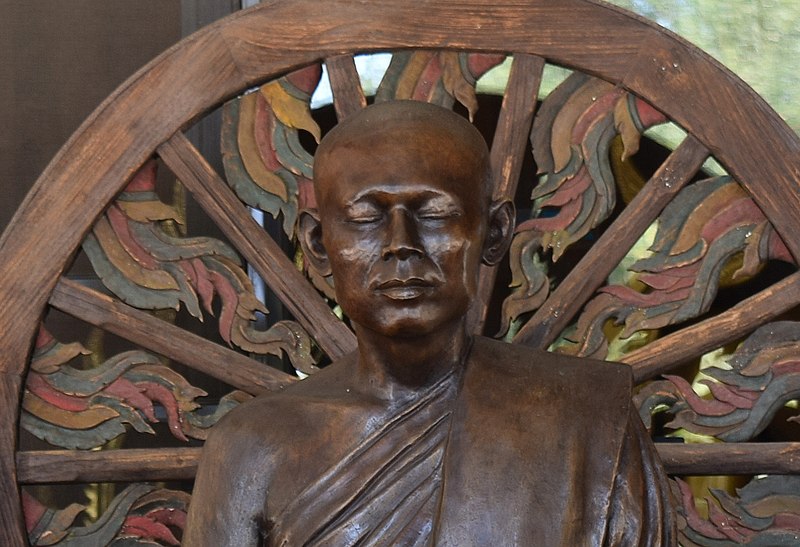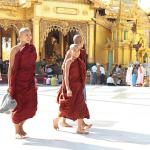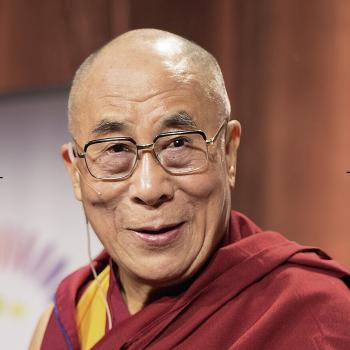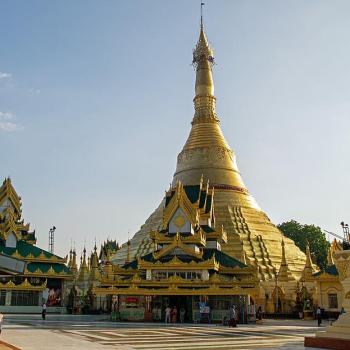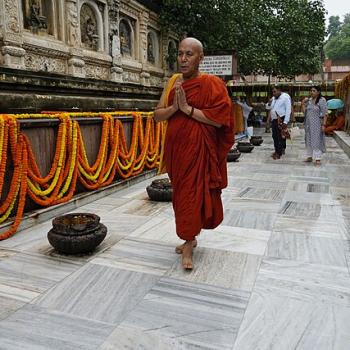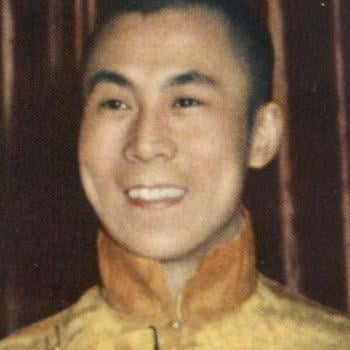The Thai Forest Tradition, or more formally the Kammaṭṭhāna Forest Tradition of Thailand, is a relatively new order of Buddhist monasticism that has come to be widely admired. The order grew out of a revival/reform movement of Theravada Buddhism in southeast Asia that began in the 19th century. Several recent posts here have touched on facets of this movement. See “Anagarika Dharmapala, a Missionary for Buddhism“; “The Vipassana Movement: Spreading Insight Everywhere“; and “U Dhammaloka, Irish Activist And Buddhist Monk.” In brief, as predominantly Buddhist Asian nations such as Ceylon (now Sri Lanka) and Burma (now Myanmar) became European colonies, Buddhist institutions had to adjust to survive. In time they became stronger and more focused on spreading the Buddha’s teachings.
Thailand — in the 19th century, Siam — never became a European colony, although for a time it was entirely surrounded by colonies of the British Empire and French Indochina. Much of the credit for Siam’s independence goes to King Mongkut (1804–1868), a skilled statesman who was also the original king of Anna and the King and The King and I. (See “The Real Story Of Anna And The King Of Siam.”) Before becoming king at the age of 47, Mongkut lived nearly 30 years as a Buddhist monk with the name Vajirañāṇo Bhikkhu. He was a recognized scholar of Buddhism and the abbot of a temple in Bangkok In his role as abbot he initiated a new order of Buddhist monasticism called the Dhammayuttika Nikaya or Thammayut order. Among other things this new order required more rigorous application of the Buddha’s monastic code and better education for teachers.
The Thai Forest Tradition began as an extension of Mongkut’s reforms. It was begun by a monk who wanted to live the way the first Buddhist monks lived.
Living as the Original Buddhist Monks Lived
In the beginning there were no monasteries. The disciples who gathered around the Buddha followed him from place to place. They were mendicants who went out with their begging bowls once a day and ate whatever they were given. They made themselves robes from “pure” cloth, which was cloth that no one else wanted. They looked for cloth in rubbish heaps and even charnel grounds, and then boiled it with vegetative matter — mostly tubers, bark, flowers, and leaves, and maybe some spices — which often turned the cloth a spice-orange color. Most of the time the first disciples retreated into forests at night and slept beneath the trees. It was only during the rainy season that they stayed indoors in one place for a time.
In about 1900 a Thai monk named Ajahn Mun Bhuridatto decided to live as the original monks lived. (“Ajahn” is a honoric title that means “teacher.”) He retreated into forests, entering villages once a day with his begging bowl. He made robes of discarded cloth. He slept under the trees. Mostly he sat in Vipassana meditation. Eventually he attracted several disciples. Among these was Ajahn Lee (1807–1961), who is remembered for making Ajahn Mun’s teachings available to a wider Thai audience.
Ajahn Shah (1918–1992) came to be an enormously influential Forest Tradition monk in the 20th century. After spending time studying the Pali Canon and taking full ordination, he left his monastery and went on a personal pilgrimage to many monasteries and teachers, to acquire deeper understanding. Among these teachers was Ajahn Mun, who inspired Ajahn Shah to devote himself to meditation. Ajahn Shah’s reputation grew. He established a monastery, Wat Pa Pong, and attracted disciples from many parts of the world. He eventually established monasteries in Switzerland, Australia, New Zealand, and Italy, and led retreats at the Insight Meditation Center in Barre, Massachusetts.
The Forest Tradition Today
The Forest Tradition today is still known for its austerity and simplicity. The Forest monks do have monasteries, but at times monks will go on “retreats” to wander the countryside, living off alms and sleeping where they can. In the monasteries the daily routine includes the morning alms round in the nearest villages. The food given to the monks will be their only daily meal, taken about noon. There is morning and evening chanting liturgy and daily meditation.
Forest monks have taken their practice to many parts of the world. And, of course, they have websites. The Forest monks often note that the Buddha himself realized enlightenment sitting under a tree.
Are there Forest nuns? Not yet. The Theravada nuns orders died out centuries ago. There are significant obstacles to reconstituting them, although the effort is being made.
